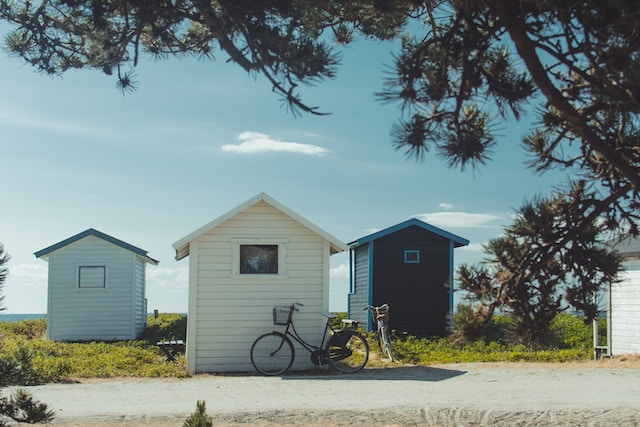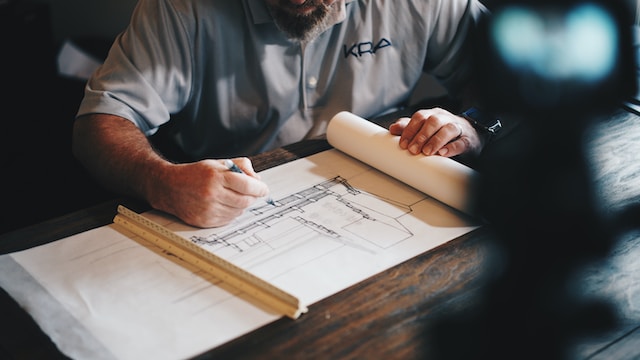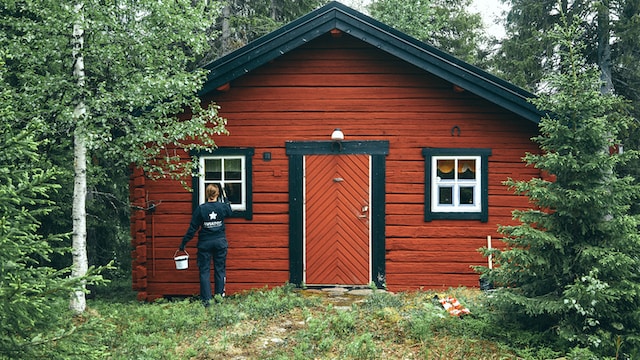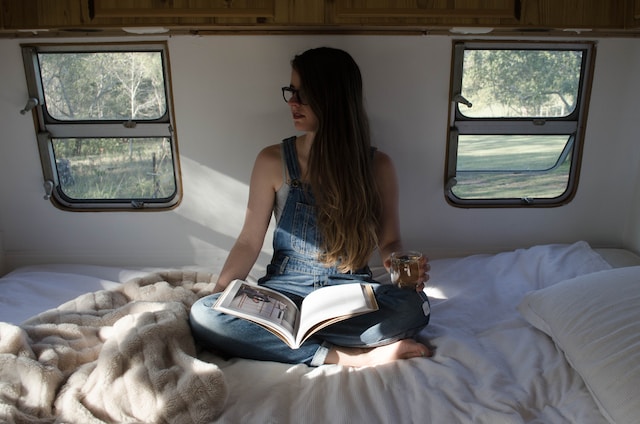
Every time I enter my tiny house, I couldn’t help but feel a sense of pride and fulfillment. It was like a dream come true. Building a tiny house was no easy feat, but the end result was more than worth it.
The process began with extensive research. I scoured the internet for every tiny house article, blog, and YouTube video I could find. I spent hours upon hours designing the floor plan, selecting materials, and calculating costs.
Finally, it was time to start construction. I rolled up my sleeves, put on my safety goggles, and got to work. Each day brought new challenges, but I was determined to overcome them. I hammered nails, sawed wood, and drilled screws, all with the goal of creating my perfect tiny home.
Throughout the process, I was forced to think outside the box. I found creative solutions to problems, cut corners where necessary, and learned new skills along the way. Even when things didn’t go according to plan, I refused to give up.
As I added the finishing touches to my tiny house, I couldn’t help but reflect on the journey. It was a labor of love, a testament to my determination, and a symbol of my desire for a simpler, more intentional life.
Now, as I sit on my cozy couch, surrounded by my carefully chosen possessions, I am reminded of the beauty of minimalism. My tiny house may be small, but it is mighty. It has taught me that with a little creativity, hard work, and imagination, anything is possible.
Creating Your Tiny Dream Home
Tiny houses have become a popular housing trend, thanks to their many benefits. Offering an affordable and sustainable alternative to traditional homes, these compact dwellings are designed to maximize space efficiency while minimizing environmental impact. If you’re considering building a tiny house, this comprehensive guide will walk you through the process, from planning and design to construction and sustainable living. Let’s embark on this exciting journey of building your dream tiny home.
Planning and Design

Before picking up a hammer, careful planning and thoughtful design are essential for a successful tiny house project. Begin by determining your needs and priorities. Consider the number of occupants, desired amenities, and lifestyle requirements. Assess the available space and familiarize yourself with local building codes and regulations. Sketch a floor plan and create a design concept that optimizes every square inch. Embrace sustainability by incorporating energy-efficient strategies and utilizing eco-friendly materials.
Building Materials and Construction
Choosing suitable building materials is crucial for the structural integrity and longevity of your tiny house. Research and select materials that are lightweight, durable, and cost-effective. Understand the construction process, from the foundation to the roof. Familiarize yourself with safety considerations and obtain any necessary permits. Gather the tools and equipment you’ll need to undertake the construction phase confidently.
Foundation and Structure
Explore different foundation options for your tiny house, such as concrete slabs, trailers, or piers. Select the foundation type that best suits your needs, taking into account mobility, stability, and local regulations. Build a solid and stable structure, ensuring proper insulation and weatherproofing to enhance energy efficiency and protect against the elements.
Plumbing and Electrical Systems
Designing a functional plumbing system requires careful consideration of water supply, wastewater management, and space limitations. Determine the most suitable plumbing fixtures and appliances for your needs. Integrate an electrical system that meets safety standards and allows for efficient power consumption. Consider incorporating renewable energy sources like solar panels to reduce your carbon footprint.
Interior Finishes and Features
In a tiny house, every square inch counts. Explore space-saving storage solutions, such as built-in cabinets, foldable furniture, and multi-purpose fixtures. Choose interior finishes and materials that are both visually appealing and practical. Optimize natural light and ventilation to create an open and inviting atmosphere. Select furniture and appliances designed specifically for small spaces to maximize functionality without sacrificing comfort.

Off-Grid and Sustainability Options
Tiny houses offer an excellent opportunity to embrace off-grid living and sustainable practices. Explore alternative energy systems, such as solar power, wind turbines, or micro-hydropower, to reduce your dependence on the grid. Consider rainwater harvesting and greywater recycling to minimize water consumption. Incorporate eco-friendly solutions, like composting toilets and natural insulation materials, to further minimize your environmental impact.
Legal and Zoning Considerations
Before embarking on your tiny house journey, research local zoning and building codes to ensure compliance. Understand permit requirements and inspections to avoid potential legal challenges. Familiarize yourself with any restrictions or limitations that may apply to tiny house construction in your area. Engage with local authorities to seek clarification and guidance, ensuring a smooth and lawful building process.
Tips for Living in a Tiny House

Living in a tiny house requires a shift in mindset and lifestyle. Embrace organization and decluttering strategies to make the most of your limited space. Discover innovative ways to utilize every nook and cranny, such as built-in storage, loft areas, and collapsible furniture. Maintain a comfortable and healthy living environment by prioritizing air quality, natural lighting, and proper ventilation. Embrace the simplicity and freedom that comes with downsizing and focus on experiences rather than material possessions.
Building a tiny house is an exciting and rewarding endeavor that offers the opportunity to create a customized and sustainable living space. By following the steps outlined in this guide, you can confidently navigate the planning, design, and construction process, leading you to a comfortable and efficient tiny home that suits your needs and values. Embrace the journey and embark on this adventure of building your dream tiny house.
Now that you have a comprehensive understanding of building a tiny house, it’s time to take the next steps. Begin by researching and gathering inspiration for your design. Familiarize yourself with local building codes and regulations. Create a budget and timeline for your project. Engage with professionals, suppliers, and local authorities to gain insights and guidance. With careful planning and determination, you’ll soon be on your way to turning your tiny house dreams into reality. Good luck on your tiny house building journey!
